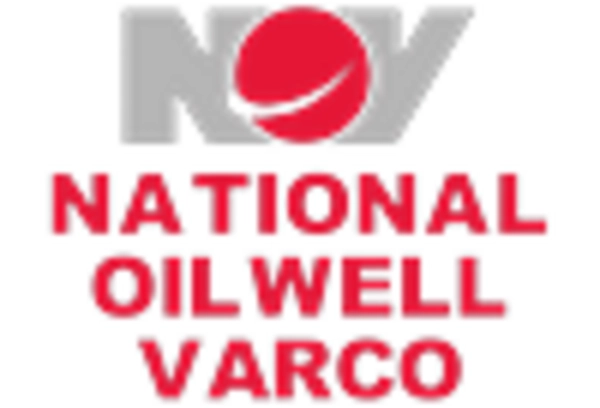Increasing Demand for Energy
The Pipeline Equipment Market is experiencing a surge in demand driven by the growing need for energy resources. As countries strive to meet their energy requirements, the construction and maintenance of pipelines become paramount. In 2025, the demand for oil and gas is projected to rise, necessitating the expansion of pipeline infrastructure. This trend is further supported by the increasing investments in energy projects, which are expected to reach approximately 1.5 trillion dollars by 2026. Consequently, the Pipeline Equipment Market is likely to benefit from this heightened activity, as more equipment is required to facilitate the transportation of energy resources.
Rising Environmental Concerns
Rising environmental concerns are reshaping the Pipeline Equipment Market, as stakeholders increasingly prioritize sustainability in pipeline operations. The push for greener practices is leading to the adoption of eco-friendly materials and technologies in pipeline construction and maintenance. In 2025, it is anticipated that investments in sustainable pipeline solutions will increase, driven by regulatory pressures and public demand for environmental responsibility. This trend may result in a shift towards more efficient and less polluting pipeline equipment, thereby influencing the overall dynamics of the Pipeline Equipment Market. Companies that embrace sustainability are likely to gain a competitive edge in this evolving market.
Infrastructure Development Initiatives
Infrastructure development initiatives are playing a crucial role in shaping the Pipeline Equipment Market. Governments and private entities are investing heavily in upgrading and expanding existing pipeline networks to enhance efficiency and safety. In 2025, it is estimated that infrastructure spending will exceed 3 trillion dollars, with a significant portion allocated to pipeline projects. This investment is likely to drive demand for advanced pipeline equipment, including valves, fittings, and monitoring systems. As nations prioritize infrastructure resilience, the Pipeline Equipment Market stands to gain from these initiatives, fostering growth and innovation in the sector.
Regulatory Compliance and Safety Standards
The Pipeline Equipment Market is increasingly influenced by stringent regulatory compliance and safety standards. Governments worldwide are implementing more rigorous regulations to ensure the safe transportation of hazardous materials through pipelines. In 2025, the enforcement of these regulations is expected to drive the demand for high-quality pipeline equipment that meets safety requirements. Companies are likely to invest in advanced technologies and materials to comply with these standards, thereby enhancing the overall safety and reliability of pipeline systems. This trend suggests a growing market for specialized equipment designed to meet regulatory demands, positioning the Pipeline Equipment Market for sustained growth.
Technological Innovations in Pipeline Monitoring
Technological innovations are transforming the Pipeline Equipment Market, particularly in the realm of pipeline monitoring and management. The advent of smart technologies, such as IoT and AI, is enabling real-time monitoring of pipeline conditions, which enhances operational efficiency and reduces downtime. In 2025, the market for smart pipeline monitoring solutions is projected to grow significantly, driven by the need for predictive maintenance and leak detection. This shift towards technology-driven solutions is likely to create new opportunities for manufacturers and service providers within the Pipeline Equipment Market, as they adapt to the evolving landscape of pipeline management.

















Leave a Comment